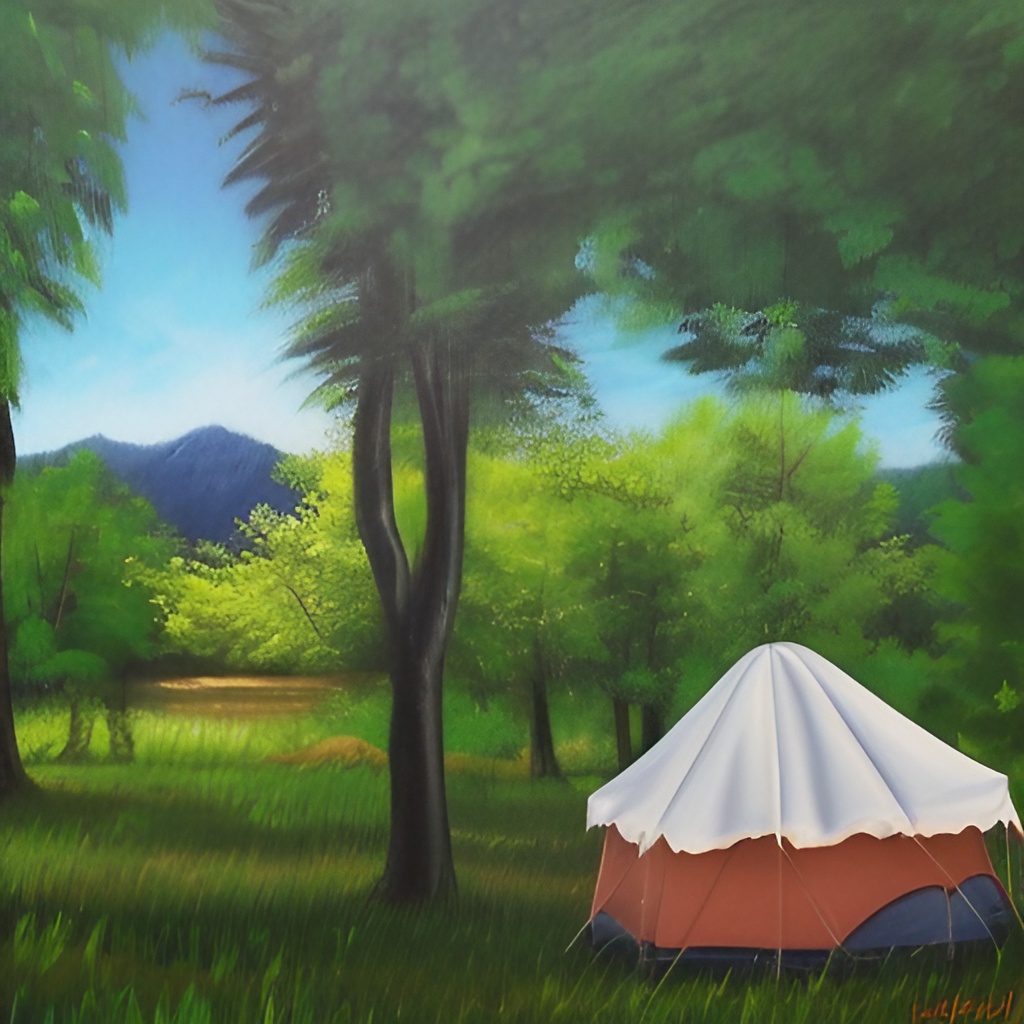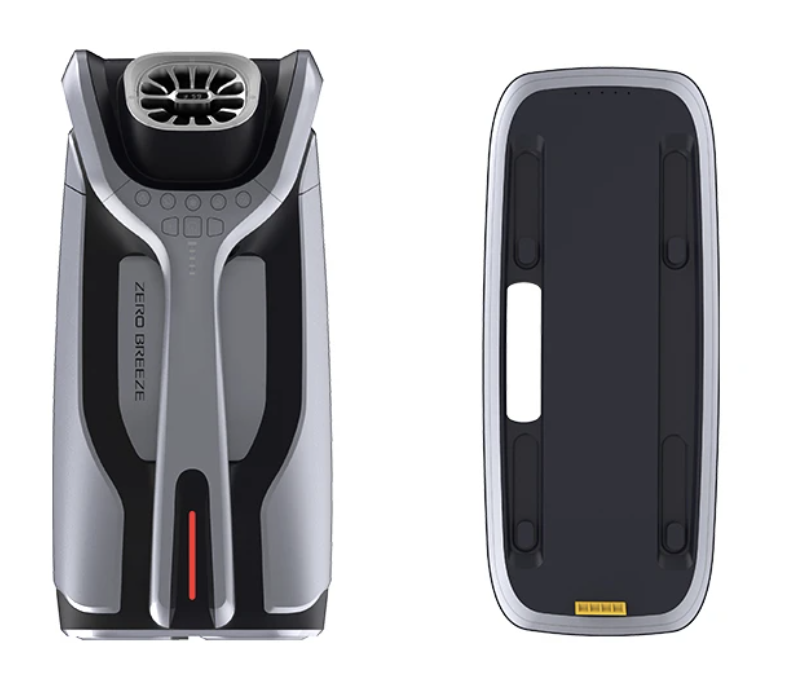
After extensive research, one of the best tent air conditioners for camping is the FRIGIDAIRE Window-Mounted Mini-Compact Air Conditioner. The BLACK+DECKER BPP10WTB Portable AC is the best portable, freestanding option.
The FRIGIDAIRE Window-Mounted Mini-Compact Air Conditioner has the best features to make your camping trips more comfortable. It is small, compact, and lightweight compared to other window AC units.
Low power consumption also makes it stand out from the crowd. The cooling capacity is not spectacular, but it’s absolutely sufficient to cool your tent. And the best thing, it is very affordable.
If you prefer a hassle-free setup, the BLACK+DECKER BPP10WTB Portable AC is the best option. It’s a powerful machine capable of cooling rooms up to 450 sq ft! So, no matter how large your tent is, this device will create a pleasant and cool ambiance.
We have spent hours of research backed by our personal experiences to find the best AC tent camping solutions. While no air conditioners are designed for tents, many can cool a tent efficiently. As a side note, your tent’s design also matters, so feel free to check out the best tents for hot weather.
If you want to know more about different technologies and features of air conditioners, read our comprehensive buyer’s guide.
- Top Recommendations – The 10 Best Tent Air Conditioners for Camping
- Best Overall – Top Recommendations
- Best for Easy Installation and Portability – Top Recommendations
- Best for Cooling Large Tents – Top Recommendations
- Best for Low Noise Level and Power Consumption – Top Recommendations
- Best for 2-4-Person Tents – Top Recommendations
- Best for 5-7-Person Tents – Top Recommendations
- Best for 8+ Person Tents – Top Recommendations
- 1. The FRIGIDAIRE Window-Mounted Mini-Compact Air Conditioner – The 10 Best Tent Air Conditioners for Camping
- 2. The LG 8,000 BTU 115V Window-Mounted Air Conditioner – The 10 Best Tent Air Conditioners for Camping
- 3. The MIDEA 12,000 BTU EasyCool Window Air Conditioner – The 10 Best Tent Air Conditioners for Camping
- 4. The LifePlus 3-1 Evaporative Air Cooler Bladeless Fan – The 10 Best Tent Air Conditioners for Camping
- 5. The Honeywell Fan & Humidifier Portable Evaporative Cooler – The 10 Best Tent Air Conditioners for Camping
- 6. The Hessaire MC37M Portable Evaporative Cooler – The 10 Best Tent Air Conditioners for Camping
- 7. The MIDEA MAP05R1WT 3-in-1 Portable Air Conditioner – The 10 Best Tent Air Conditioners for Camping
- 8. The SereneLife Portable Electric Air Conditioner Unit – The 10 Best Tent Air Conditioners for Camping
- 9. The BLACK+DECKER BPP10WTB Portable Air Conditioner – The 10 Best Tent Air Conditioners for Camping
- 10. The Zero Breeze Mark 2 Portable Battery-Powered Air Conditioner – The 10 Best Tent Air Conditioners for Camping
- How to Choose the Best AC for Your Tent – The 10 Best Tent Air Conditioners for Camping
- Conclusion: The Final Verdict – The 10 Best Tent Air Conditioners for Camping
- Frequently Asked Questions – The 10 Best Tent Air Conditioners for Camping
- 1. Can You Air Condition a Tent? – FAQs
- 2. What Is BTU, SACC, and ASHRAE Rating? – FAQs
- 3. What Is The Best Type Of Air Conditioner For Tent Camping? – FAQs
- 4. Can Evaporative Coolers Really Cool a Tent? – FAQs
- 5. Is It Expensive to Air Condition a Tent? – FAQs
- 6. Is It Difficult to Install an AC in a Tent? – FAQs
Top Recommendations – The 10 Best Tent Air Conditioners for Camping
Best Overall – Top Recommendations
Best for Easy Installation and Portability – Top Recommendations
Best for Cooling Large Tents – Top Recommendations
Best for Low Noise Level and Power Consumption – Top Recommendations
Best for 2-4-Person Tents – Top Recommendations
- MIDEA MAP05R1WT 3-in-1 Portable Air Conditioner – powerful and lightweight, small AC unit
- Zero Breeze Mark 2 – battery-powered, innovative air conditioner.
Best for 5-7-Person Tents – Top Recommendations
- LG 8,000 BTU 115V Window-Mounted Air Conditioner – simple but reliable and powerful air conditioner
- Honeywell Fan & Humidifier Portable Evaporative Cooler – sleek design, low energy consumption and decent cooling
Best for 8+ Person Tents – Top Recommendations
- MIDEA 12,000 BTU EasyCool Window Air Conditioner
- Hessaire MC37M Portable Evaporative Cooler – heavy-duty, super-strong evaporative cooler for indoor and outdoor use
1. The FRIGIDAIRE Window-Mounted Mini-Compact Air Conditioner – The 10 Best Tent Air Conditioners for Camping
- Cooling power (40%) – 7/10
- Noise Level (25%) – 7/10
- Power consumption (25%) – 8/10
- Portability (10%) – 8/10
Best for: campers with smaller tents who want a lightweight but effective AC unit;$
Window AC units are great for cooling your tent, but are they too large, too heavy, and difficult to install? The usual answer is yes, but not with the FRIGIDAIRE Window-Mounted Mini-Compact Air Conditioner.
This 5,000 BTU window AC unit is probably the lightest model out there. It weighs only 35 lbs.
It is also a small and compact unit with 15.25 x 16 x 12 inches dimensions. This is very important for campers. You won’t carry it around, but a small size guarantees it will fit any tent with a dedicated AC port. Or a doggy door.
If your tent doesn’t have an AC opening, you must improvise and create one.
This model is small but powerful. It provides cooling power to cover 150 sq ft, which is more than enough for smaller tents. Even with all the losses due to lack of insulation.
Speaking of power, it doesn’t consume much energy and runs at 450 watts. Commonly, AC units use between 500 and 1500 watts. So, this device will keep your tent cool without wasting massive energy.
On the downside, it’s not the quietest model. A noise level of up to 59 decibels (dB) is decent but not impressive.
The settings are manual, offering 7 levels of cooling and 2 levels of cool and fan speeds. A remote would be useful, but it’s a good trade-off. The lack of remote control keeps the price low, making this air conditioner a steal.
Pros – The FRIGIDAIRE Window-Mounted Mini-Compact Air Conditioner
- Affordable
- Very lightweight for a window AC unit
- Small and compact
- Low power consumption
- Easy-to-clean filter
Cons – The FRIGIDAIRE Window-Mounted Mini-Compact Air Conditioner
- No remote, only manual control
- Requires power access
2. The LG 8,000 BTU 115V Window-Mounted Air Conditioner – The 10 Best Tent Air Conditioners for Camping
- Cooling power (40%) – 8/10
- Noise Level (25%) – 7/10
- Power consumption (25%) – 7/10
- Portability (10%) – 6/10
Best for: campers with a tent for 4-7 people who want a simple but powerful cooling device;$$
You want an air conditioner that will cool your tent quickly? The LG 8,000 BTU 115V Window-Mounted Air Conditioner might be a perfect choice.
This model is designed to cool down a room of up to 350 sq ft. This area covers pretty much all camping tents. However, it is more difficult to cool the tent. Roughly, a declared area should be divided by two if you want to use the unit to cool the tents.
Anyway, this 8000 BTU AC works great. It’s a simple model without bells and whistles. But it performs impeccably with a great energy-to-performance ratio. And that’s pretty much all that matters on camping trips.
It can quickly cool down a room or tent and maintain the desired temperature. 3 cooling and fan speeds allow you to customize the cooling. It is Energy Star certified. It translates to low energy consumption.
It’s fairly quiet, with a sound level of 53 dB in low mode.
As for the installation, it is compact enough to fit almost all tents with an AC port. AC ports commonly measure around 15”-16” by 20”-22”. This unit is 19.6” long and 12.4” high.
As for shortcomings, I’d say there aren’t any apart from the weight. At 58 pounds, it is pretty heavy. Some users say it doesn’t come with many advanced features. Maybe so, but you don’t need myriads of sophisticated (read: expensive) functions and features to cool a tent.
Pros – The LG 8,000 BTU 115V Window-Mounted Air Conditioner
- Powerful, cool up to 350 sq ft
- Energy saver function
- Relatively small and compact (19.6” x 12.4” x 19.4”)
- Washable filter
- Easy to install and use
Cons – The LG 8,000 BTU 115V Window-Mounted Air Conditioner
- While it’s not very loud, some users complained about an annoying, rattling sound
- A bit heavy at 58 lbs.
3. The MIDEA 12,000 BTU EasyCool Window Air Conditioner – The 10 Best Tent Air Conditioners for Camping
- Cooling power (40%) – 8/10
- Noise Level (25%) – 7/10
- Power consumption (25%) – 7/10
- Portability (10%) – 5/10
Best for campers with extra-large tents;$$$
Are you worried about how to cool your huge tent when it gets too hot? The MIDEA 12,000 BTU EasyCool Window Air Conditioner can do the job, even if you own a gigantic tent.
This air conditioner is powerful and super-efficient. It might be challenging to set it up due to its size and weight. But, once you get it done, you will be thankful. You can keep your tent as cool as you want it to be.
It is a heavy unit, but it has to be considering the strength and cooling capacity. Note this machine can cool an area of up to 550 sq ft! Apart from the weight, it is easy to install as long as it fits the opening of your tent.
Even though it’s powerful, it is energy-efficient with a 5-star efficiency rating.
If you camp with a bunch of friends, you may have to deal with not just excessive heat but humidity as well. This air-conditioner is 3-in-1. It cools, circulates air, and dehumidifies.
So, you can control two major hot weather nuisances: high temperature and humidity.
It also comes with a remote control. The LED display is intuitive, although not too large. With a washable and reusable filter, they’ve got it all covered.
The only downside of this model is its weight. It’s not a problem for home use, but dragging almost 80 pounds to your camping site is a bit cumbersome.
Pros – The MIDEA 12,000 BTU EasyCool Window Air Conditioner
- Very Powerful
- Dehumidifying function
- Energy efficient
- Comes with a remote control and LED display
Cons – The MIDEA 12,000 BTU EasyCool Window Air Conditioner
- Very Heavy (74.8 lbs.)
4. The LifePlus 3-1 Evaporative Air Cooler Bladeless Fan – The 10 Best Tent Air Conditioners for Camping

- Cooling power (40%) – 5/10
- Noise Level (25%) – 9/10
- Power consumption (25%) – 9/10
- Portability (10%) – 9/10
Best for: campers with smaller tents who want a quiet and lightweight cooler;$
Keeping the tent cool is cool, but air conditioners can be annoying. The LifePlus 3-1 Evaporative Air Cooler Bladeless Fan is barely louder than a whisper. If you like numbers, the noise level varies between 35 and 45 dB depending on the working mode.
A fan without blades? It sounds like witchcraft, but it really works. An ingenious bladeless design makes this device not just quiet but also efficient. It uses 80 watts to run. For comparison, it equals the average 55” LED TV power consumption.
There’s another design benefit – it’s very easy to clean it. And you don’t have to be extra cautious if your kids or pets are around.
Weighing only 13.4 pounds, it is one of the lightest coolers in the class. It allows you to move it from place to place easily. Or carrying it from your car to the camping spot.
But does it really cool the air? Well, like all evaporative coolers, it works great in dry climates. Still, it’s not a very powerful machine and can’t cool large tents or rooms. But you’ll feel a significant cooling effect in a smaller tent.
It comes with a 1-gallon water tank. It can run for 4 to 5 hours without refilling depending on the working mode.
It works best in low humidity levels (under 25%) but will provide some relief up to 50% relative air humidity.
This evaporative cooler is unsuited for larger spaces because it lacks the power to cool it. But the major downside is a common trait of all evaporative coolers – They don’t work in high humidity.
Pros – The LifePlus 3-1 Evaporative Air Cooler Bladeless Fan
- Lightweight (13.42 lbs.)
- The bladeless design keeps noise at very low levels
- Safer for kids and pets
- Low power consumption
- Easy to clean
Cons – The LifePlus 3-1 Evaporative Air Cooler Bladeless Fan
- Inefficient in a humid environment
- Can’t cool larger rooms
5. The Honeywell Fan & Humidifier Portable Evaporative Cooler – The 10 Best Tent Air Conditioners for Camping
- Cooling power (40%) – 6/10
- Noise Level (25%) – 7/10
- Power consumption (25%) – 8/10
- Portability (10%) – 8/10
Best for: campers with medium-size tents who want a versatile cooler; $$
You don’t want to buy a window AC unit but want something more than a fan to cool your tent? The Honeywell Fan & Humidifier Portable Evaporative Cooler will cool and humidify the air inside your tent or provide air circulation.
While it is designed to cool small areas, the 300 cubic feet per minute airflow rate is enough to cool your tent. Like other swamp coolers, it decreases temperature through water evaporation.
It means it increases humidity levels and is only effective in a dry climate. You’ll also need to leave a window or door slightly open to avoid reaching high humidity levels.
This compact device measures 15.7” x 13.5” x 31.5”. Apart from the cooling effect, it also looks cool. The nice and lightweight design makes it portable and usable on your camping trips. Well, as long as you have power access.
It is very easy to use. The detachable, 2.6-gallon water tank is convenient and easy to refill. A digital display is large and intuitive. It’s also pretty bright, which is great during the day. However, it can bother you at night if you need a completely dark tent.
You can use several fan and cooling speeds or set the timer for up to 7.5 hours. Also, a washable active carbon filter will increase the air quality in your tent.
This cooler requires 100 watts for running and saves energy. So, it’s a well-rounded and versatile model. It can’t make you freeze in hot weather, but it will provide relief if the humidity level is low.
On the downside, it is somewhat loud. I couldn’t find exact figures in dB, but many users have reported relatively high noise levels.
Pros – The Honeywell Fan & Humidifier Portable Evaporative Cooler
- Can cool an area of up to 150 sq ft
- Energy efficient
- Cool design
- Easy to refill, detachable water tank
- Lightweight (18.5 lbs.)
Cons – The Honeywell Fan & Humidifier Portable Evaporative Cooler
- It’s a bit loud
6. The Hessaire MC37M Portable Evaporative Cooler – The 10 Best Tent Air Conditioners for Camping
- Cooling power (40%) – 8/10
- Noise Level (25%) – 6/10
- Power consumption (25%) – 7/10
- Portability (10%) – 7/10
Best for campers with extra-large tents who want a super-strong swamp cooler;$$$
You’ll need an extra strong cooler if your tent is extra large. The Hessaire MC37M Portable Evaporative Cooler is the most powerful in its class.
This machine is all about reliability and performance. It is quite simple, with no bells and whistles. There are only 3 modes and on/off buttons for the water pump and oscillating function. And it’s all mechanical.
But it will get the job done impeccably. Any swamp cooler will cool the air to a certain extent. But, to be effective, cool air must be dispersed throughout the space.
The Hessaire MC37M has a powerful fan to reach the far corners of your tent, room, or workspace. A swing system provides even distribution.
3-sided cooling pads are made of thick, rigid media. What you get is a large evaporative surface to maximize the cooling effect.
By the way, rigid cooling pads are much more efficient, easier to maintain, and more durable. Most swamp coolers use fiber cooling pads simply because they are more affordable.
This cooler comes with a huge 10.4-gallon water tank. However, it uses water to run for around 4 hours without refilling.
4 heavy-duty casters (2 lockings and 2 non-locking) will provide easier mobility and stability. This device is not lightweight, which is expected considering its size and power. Still, with a handle and wheels, it’s portable enough.
This unit will not disappoint if you use it in dry conditions and near an open window. Otherwise, you’ll only get a super-humid tent or room.
Pros – The Hessaire MC37M Portable Evaporative Cooler
- Very powerful
- 3-sided rigid cooling pads
- Outstanding airflow (3100 cubic feet per minute)
- Can cool spaces up to a whopping 950 sq ft
- Comes with caster wheels
- Continuous refill option
Cons – The Hessaire MC37M Portable Evaporative Cooler
- A bit heavy for an evaporative cooler (39 lbs.)
- No remote
7. The MIDEA MAP05R1WT 3-in-1 Portable Air Conditioner – The 10 Best Tent Air Conditioners for Camping
- Cooling power (40%) – 8/10
- Noise Level (25%) – 7/10
- Power consumption (25%) – 7/10
- Portability (10%) – 7/10
Best for campers who want powerful cooling for small-to-medium tents;$$$
You don’t want to mess with your tent to install a window AC unit, but you want powerful cooling? No problem. The MIDEA MAP05R1WT 3-in-1 Portable Air Conditioner can quickly and efficiently cool down small rooms or tents.
It’s a compact unit measuring 13 x 12.6 x 25 inches. Weighing 47 pounds, it is relatively light, considering it’s a true AC unit.
While 6000 BTU is not too impressive, it is more than enough to provide a great cooling effect. Actually, anything more than that would be overkill for relatively small tents. Numbers never lie, but they don’t tell the whole story.
According to hundreds of happy users, this unit will never disappoint you when it comes to cooling.
Some reported other issues, like water leakage and exhaust hose, overheating. However, they were few and far between. These issues don’t appear to happen regularly, so they are likely a result of poor quality control or shipment damage.
Apart from cooling, you can choose a fan function to circulate the air and a dehumidifying function to keep high humidity at bay.
It’s a portable AC, so you don’t need to install it apart from the exhaust hose. It has a window kit to seal the opening and avoid air leakage.
You don’t have to get up to turn it on or off. Remote control and a 24-hour timer allow you to set and forget it.
Like other portable AC units, it will take up space in your tent. But you’ll get a cool tent with optimum humidity levels for perfect relaxation during hot days or nights.
Pros – The MIDEA MAP05R1WT 3-in-1 Portable Air Conditioner
- Excellent cooling for spaces up to 150 sq ft
- Fan and dehumidifying functions
- LED display and remote control
- Window kit included
Cons – The MIDEA MAP05R1WT 3-in-1 Portable Air Conditioner
- Quality control issues. Several users have reported problems with the self-evaporation function.
8. The SereneLife Portable Electric Air Conditioner Unit – The 10 Best Tent Air Conditioners for Camping
- Cooling power (40%) – 8/10
- Noise Level (25%) – 7/10
- Power consumption (25%) – 6/10
- Portability (10%) – 7/10
Best for: campers with 5 to 8-person tents who want hassle-free cooling;$$$
If you’re looking for a powerful and portable freestanding AC unit for your tent, the SereneLife Portable Electric Air Conditioner has much to offer.
With the 8000 BTU cooling output, it can cool down 215 sq ft. Yes, it’s too much, even for the largest tent. But it’s better to have a slightly too strong than a slightly too weak unit.
After all, most tents aren’t insulated, and there are many ways for cold air to escape. It’s not an exact science, but you can rest assured that this air conditioner will cool down your tent pretty quickly. But you’ll probably have to keep it running to stay cool.
This model also does a great job of dehumidifying the air. It can remove around 1.2 liters of moisture per hour. It’s about 5 cups or a bit more.
If it’s not too hot, or you want to save some energy, you can set it on the fan option. It will just create a breeze of circulating air using very little electricity. Speaking of which, it uses around 900 watts at full power mode.
It is declared to produce 55-57 dB noise levels, which is pretty quiet. However, user reviews are quite mixed, considering noise levels. Most of them agree it’s pretty similar to any regular AC unit.
It also comes with rolling wheels for convenient placement and moving. For further convenience, a remote can adjust the settings from a distance.
The mounting kit is included to install the exhaust hose and seal the opening around it.
Pros – The SereneLife Portable Electric Air Conditioner Unit
- Great cooling power
- Lightweight (46 lbs.)
- Dehumidifier
- Rolling wheels
- Remote control
Cons – The SereneLife Portable Electric Air Conditioner Unit
- Relatively high energy consumption
9. The BLACK+DECKER BPP10WTB Portable Air Conditioner – The 10 Best Tent Air Conditioners for Camping
- Cooling power (40%) – 9/10
- Noise Level (25%) – 7/10
- Power consumption (25%) – 6/10
- Portability (10%) – 6/10
Best for campers with extra-large tents who want reliable and powerful air conditioner;$$$
To cool your super-large tent, you’ll need a powerful and reliable AC unit. The BLACK+DECKER BPP10WTB Portable Air Conditioner perfectly fits the description.
So, how powerful should an AC unit be to cool a gigantic tent? There’s no straight answer here, but how about 14,000 BTU output? That’s what you’ll get from this B&D unit. It is meant to cool spaces up to 450 sq ft.
So, it should be enough to cool down basically any camping tent. And it will cool it in no time. By the way, it uses an ozone layer-friendly refrigerant.
Besides cooling, it also features fan and dehumidifying functions. It is very efficient at dealing with humidity. It can remove 11 gallons of moisture per 24 hours.
It also comes with an LCD remote control and LED display. The timer can be set 24 hours in advance to keep the tent cool while you sleep.
It’s worth mentioning that it needs to be transported upright. If that’s not possible, you’ll need to wait for 24 hours before using the unit safely.
This powerful air conditioner performs great, although it’s not the quietest model. It is advertised as quiet, but it’s a bit misleading. It is very quiet when set to sleep mode. However, it produces a noise of 58 dB on the highest setting. It is not too loud, but not very silent, either.
On the downside, the power comes with a trade-off: it weighs 65 pounds. Yes, it has wheels, but you probably can’t roll it all the way. So, prepare for some heavy lifting.
Pros – The BLACK+DECKER BPP10WTB Portable Air Conditioner
- Outstanding cooling power
- Fan and dehumidifier functions
- 24-hour timer
- Long exhaust and power cable for better maneuverability
- Quiet sleep mode
Cons – The BLACK+DECKER BPP10WTB Portable Air Conditioner
- A bit pricey
- Heavy at 65 pounds
10. The Zero Breeze Mark 2 Portable Battery-Powered Air Conditioner – The 10 Best Tent Air Conditioners for Camping
- Cooling power (40%) – 6/10
- Noise Level (25%) – 7/10
- Power consumption (25%) – 9/10
- Portability (10%) – 9/10
Best for: campers who don’t mind spending a lot on new and innovative tech;$$$$
If you have a soft spot for new tech, this portable AC can be a great choice. The Zero Breeze Mark 2 has tried to start a revolution in the portable cooling industry. So far, the results are mixed. Let’s see.
As soon as you look at this product, you’ll like it. The sleek futuristic design and small size are appealing. Still, at the end of the day, performance matters.
The Zero Breeze Mark 2 is a 2300 BTU air conditioner which is not very impressive. It can’t cool spaces larger than 25 to 40 sq ft. So, it’s more of a personal than a room cooler.
It is very lightweight at 16.5 pounds. However, there’s a caveat. It uses a huge battery that adds another 12 pounds of weight. It’s still very portable but not feather-light.
The battery can run between 3 and 5 hours. And it takes 5 to 6 hours to recharge the battery fully. You can’t do both things simultaneously.
Zero Breeze claims it’s quiet (52dB), but it’s only partially true. There’s a huge difference in noise level between sleep, low, and high modes. Yes, sleep mode is very quiet. But on high settings, it is louder than a conventional air conditioner.
On the bright side, it really has low power requirements. It uses between 120 and 240 watts per hour. If you have power access, it can run without a battery with the A/C adapter.
Overall, it’s a super-cool but not-so-efficient unit. It is a promising concept, but earning the honors takes some development and improvement.
Pros – The Zero Breeze Mark 2 Portable Battery-Powered Air Conditioner
- It can run on a battery
- Low power consumption
- Lightweight and compact
- Stylish design
- Quiet sleep mode
Cons – The Zero Breeze Mark 2 Portable Battery-Powered Air Conditioner
- Very expensive
- Low cooling power
- Battery life up to 5 hours
- Loud on high setting
How to Choose the Best AC for Your Tent – The 10 Best Tent Air Conditioners for Camping
Deciding to get an air conditioner for the tent is easy. Maybe you want to sleep tight on hot and humid summer nights. Or you want more comfort. Whatever the reason, cooling your tent can improve your camping experience immensely.
But choosing the best device might be quite challenging. While there’s a vast sea of options, almost none are designed for tents. It’s a new ground to be covered.
While products on our list cover pretty much all types and features, here are basic rules on what to look for in air conditioners suitable for tents.
Types of Air Conditioners – How to Choose the Best AC for Your Tent
There are 3 basic types of coolers useful for tent cooling: evaporative coolers, portable AC units, and window AC units.
Evaporative Coolers – Types of Air Conditioners
Evaporative coolers (swamp coolers) aren’t true air conditioners, strictly speaking. However, it is the type you will see most often on camping trips.
They are affordable, compact, quiet, and lightweight. Just like they are made for camping. However, these coolers are limited and won’t significantly lower the temperature inside the tent.
An evaporative cooler is basically a fan that cools the air by circulating it over a wet cooling pad. As water evaporates, it absorbs heat and decreases the temperature of dry air. It’s simple physics.
Actually, it’s the same principle as perspiration. When it’s hot, we sweat; when it evaporates, it cools our skin.
However, it’s limited as vapor and cooler dry air are dispersed throughout the tent or room. Therefore, it is only useful in dry climates. Even then, you must leave the window open, or the air will quickly reach high humidity levels.
So, evaporative coolers need water but work only in arid conditions. They are decent when the humidity is under 25%, not so effective between 25 and 50%, and useless above 50%.
Expert tip: if possible, use cold water and ice cubes to increase the cooling effect.
Portable AC Units – Types of Air Conditioners
The name suggests they should be suitable for tents, but it’s not simple. They are commonly a bit large and bulky, although not too heavy. Yes, you can put them inside the tent with no hassle.
But they require grid access, so you’re limited to campgrounds that provide electricity for campers. A power generator can be another option to provide electricity. But it adds more gear and more effort.
Moreover, portable air conditioners take up precious space inside the tent. Typically, they are around 25 feet tall. Think about dome tents with inclined walls; you’ll feel you have another occupant in your tent.
Most portable units are powerful enough to cool your tent if these things don’t bother you. Not a little bit but as much as you want it.
So, you get a hassle-free setup and sufficient cooling vs. losing floor area and transporting bulky equipment.
Window-Mounted Air Conditioners – Types of Air Conditioners
This may surprise you, but conventional window AC units are also useful for tents. Yes, it takes some work to install them, and they are not lightweight, to put it mildly. But they provide the best cooling effect.
A window AC unit with the same power and BTU rating will do better cooling than the portable counterpart. Simply, their design allows the best efficiency.
So, if you put the window AC into your tent, you won’t have to worry about heat. Also, it doesn’t take up much space inside the tent. It is placed at the opening, protruding only a few inches inside.
Window units usually have convenient features such as remotes, timers, fans, or dehumidifiers. They are not very quiet, but the noise is partially directed outside the tent.
On the downside, they are not ready out of the box. First, you need a tent with an AC port to allow you the installation of a window AC unit. If your tent doesn’t have one, you’ll have to improvise and probably modify your tent to create a fitting port for the AC unit.
Then, you need a stable stand or crate to put the unit on.
Finally, you’ll have to seal the gaps. Any gap will decrease the effectiveness of the unit.
So, window AC units are energy efficient with excellent cooling power but require installation time and work.
Cooling Power – How to Choose the Best AC for Your Tent
Any air conditioner will be useless if it doesn’t cool your tent enough to feel comfortable. Tents are not insulated, so you’ll need a bit more power.
The cooling capacity of ACs is measured in BTUs (British Thermal Units). The higher the number, the better the cooling. Generally, it takes at least a 5000 BTU unit to provide a sufficient cooling effect.
True, most portable and window-mounted AC units meet this standard. A 10000 BTU unit should suffice for the largest camping tent.
As for evaporative coolers, they are not as nearly effective as portable and window AC units.
They are designed to provide relief in high temperatures and low humidity.
They don’t really remove the heat, so they have no BTU rating. However, the CFM (cubic feet per minute) rating will tell you how much air circulates the space per minute. The CFM number should equal or exceed your tent’s volume.
Power Consumption – How to Choose the Best AC for Your Tent
Whether you want to be eco-friendly or to save money on electricity bills, you should consider power consumption.
Most tents aren’t insulated, so your AC will have to work more or less constantly to maintain a comfortable ambiance.
Evaporative coolers use very little energy, commonly between 50 and 150 watts per hour. Roughly, it equals TV or incandescent bulb power consumption.
Window and portable AC units can use anywhere between 500 and 1500 watts per hour, usually around 1000. Window AC units are more efficient at transferring electrical power to the cooling effect.
Noise Level – How to Choose the Best AC for Your Tent
While air conditioners bring relief and comfort temperature-wise, they also produce an undesirable humming sound.
Noise levels are measured in dB (Decibels). Any number below 50 can be considered very quiet. To get the picture, a running refrigerator commonly produces around 50 dB of noise. The normal conversation reaches 60 dB.
Evaporative coolers are typically very quiet and rarely produce a noise level of 50 dB.
Portable and window AC units are not that quiet, but different models have significant differences. So, check out the noise levels and choose accordingly.
Weight & Portability – How to Choose the Best AC for Your Tent
You won’t carry an air conditioner on your hiking or backpacking trips. For car camping trips, weight and portability is not a big issue.
Evaporative or swamp coolers are lightweight, and you’ll have no problems carrying them to your camping spot.
On the other hand, window AC units can be very large and heavy. However, larger units are typically stronger and are probably overkill for tent cooling. Some models, like the FRIGIDAIRE Window-Mounted Mini-Compact AC, are small and weigh less than 50 pounds.
Portable AC units commonly weigh between 50 and 70 pounds. They come with wheels but are not very useful on uneven ground.
Conclusion: The Final Verdict – The 10 Best Tent Air Conditioners for Camping

To sum it up, the FRIGIDAIRE Window-Mounted Mini-Compact Air Conditioner is the best option for air conditioning the tent.
The perfect balance between power, lightweight, and size makes it a clear winner for us. While better and stronger air conditioners exist, this model best fits and cools the tent.
For larger tents and campers who want a super-easy and fast setup, the BLACK+DECKER BPP10WTB Portable Air Conditioner will work impeccably. It can make your tent freezing cold in no time. Fan and dehumidifying functions are also available.
We know that various prices and performances lead to different choices. So, we have tried to include different types to suit everybody’s needs.
Now you know what to expect from various types and what to look for in an air conditioner for a tent. The only thing left is to make the final choice. Good luck!
Frequently Asked Questions – The 10 Best Tent Air Conditioners for Camping
1. Can You Air Condition a Tent? – FAQs
It is possible to air condition a tent. Please note that air conditioners are not specifically designed for tents. Most tents have no insulation. It is difficult to seal them completely. These shortcomings make it more difficult to cool a tent.
However, tents are usually not too large and have relatively low ceilings. Many air conditioners are designed to cool much larger spaces. So, it may take more electricity but a decent AC will cool down the tent.
Due to a lack of insulation, an AC unit will probably need to work constantly to maintain the desired temperature.
You can take some steps to maximize the effectiveness of air conditioners:
- Position your tent wisely. Set up your tent in the shade if possible.
- Breezy areas can decrease the temperature
- Choose a tent with light colors
- Use reflective space blankets
2. What Is BTU, SACC, and ASHRAE Rating? – FAQs
The British Thermal Unit is a unit that measures heat energy. It is the energy needed to raise or lower the temperature of one pound of water by one degree Fahrenheit.
Regarding air conditioning, it specifies how many BTUs the product can remove from the air per hour. In other words, it shows the cooling capacity of an air conditioner.
New models often show SACC BTU and ASHRAE BTU values.
ASHRAE stands for The American Society of Heating, Refrigerating and Air-Conditioning Engineers. SACC stands for Seasonally Adjusted Cooling Capacity.
Both acronyms denote cooling capacity ratings. ASHRAE BTU is a rating that shows BTU output. The SACC rating was introduced in 2017 to provide a more accurate field assessment of the product. It reflects average performance in a number of different test conditions, from average to extreme.
3. What Is The Best Type Of Air Conditioner For Tent Camping? – FAQs
The best type depends on camping location, tent size, and local climate, but mostly on your preferences.
Evaporative coolers are effective only in dry climates. They are affordable, lightweight, portable, quiet, and operate cheaply.
Portable AC units provide excellent cooling. But, they are expensive, use a lot of electric power, and occupy a lot of space inside the tent.
Window AC units are energy-efficient and have an unmatched cooling capacity. They are not very portable, and the setup can be complicated. Most tents need to be adapted to allow window AC unit installation.
4. Can Evaporative Coolers Really Cool a Tent? – FAQs
Evaporative coolers can cool a tent under certain conditions. As the name suggests, evaporative coolers use water evaporation to decrease the temperature of the air. It’s a natural process that only accelerated, so it works.
However, some requirements need to be met so the process is effective.
- Constant water supply.
- Low humidity level. Optimal – up to 25%.
- Open the window to introduce fresh dry air.
Therefore, an evaporative cooler can slightly decrease the air temperature in a tent as long as humidity levels stay low.
5. Is It Expensive to Air Condition a Tent? – FAQs
It depends on a number of elements. Here’s a quick overview.
| Type | Cost | Power Consumption | Setup |
| Evaporative Cooler | $50 – 300+ | 50 – 150Wh | No setup |
| Portable AC | $250 – 500+ | 1000 – 1500+Wh | Simple and easy |
| Window AC | $150 – 500+ | 500 – 1500+Wh | Might be complicated |
Evaporative coolers are the most cost-effective. They are affordable, so it’s not a huge investment. Furthermore, evaporative coolers are energy efficient. They spend as little energy as an incandescent light bulb.
On the downside, they are limited to a dry environment and can’t lower the temperature immensely.
Portable and window AC units are relatively expensive. New models are more energy efficient but still consume much energy. Since tents have basically no insulation, AC units will need more power to cool a tent than a bedroom of the same size.
Window units provide more cooling power per BTU than their portable counterparts.
6. Is It Difficult to Install an AC in a Tent? – FAQs
It depends on the type of AC appliance.
Portable AC units need very little effort. They are freestanding devices, so you can put them inside the tent and need to be connected to a power source.
You also need to run the exhaust hose out of the door or vent opening and secure it to avoid air leaking through the opening. Most models come with an installation kit to seal the opening easily and quickly.
Window units require a proper setup. It is easy if your tent has a fitting AC port, doggy door, or vent opening. You will only need a stand or crate to put the unit on it so it matches the opening.
If there’s no AC port or it’s smaller than your AC unit, you’ll have to adjust the tent and create a DIY opening. Turning the backdoor (if there’s one) into an AC opening is another option to avoid more complicated adaptations.
Evaporative coolers require only a power source and no setup. You can place them in the tent and plug them in.























